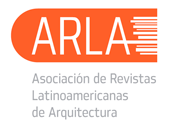DESARROLLO DE UN PROCESO DE MORFOGÉNESIS BASADO EN COMPUTACIÓN HEURÍSTICA MULTI-OBJETIVA PARA UNA ESTRUCTURA RETICULAR DE CUBIERTA
Resumen
En este artículo se presenta el desarrollo de un proceso de morfogénesis, el cual pretende encontrar la configuración geométrica óptima para una estructura reticular de cubierta. El procedimiento propuesto está basado en un algoritmo heurístico, el Unified Particle Swarm Optimization, UPSO (Parsopoulos, K. y Vrahatis, M.N., 2004), en el cual se tienen como objetivos la minimización del peso de la estructura y su energía de deformación. De esta manera, se busca obtener, simultáneamente, la topología estructural más liviana y la que presenta los menores desplazamientos. En los problemas de prueba, el proceso de optimizaciónse ejecutó con distintas combinaciones de pesos para lograr una aproximación al frente de Pareto, donde se puede seleccionar para el diseño estructural definitivo, la cubierta estéticamente más agradable, conservando el alto rendimiento que caracteriza a las soluciones presentes en dicho grupo. De los resultados obtenidos, se concluyó que el procedimiento llevado a cabo es capaz de generar y optimizar la configuración geométrica de estructuras reticulares de cubierta, obteniendo así, reducciones (en promedio) en el peso del orden de 40%, y en la energía de deformación de 60%, en comparación con las estructuras iniciales generadas aleatoriamente.
ABSTRACT
In this manuscript we develop a morphogenetic process, which aims to find the optimal geometric configuration for a grid roof structure. The proposed procedure is based on the Unified Particle Swarm Optimization, UPSO, (Parsopoulos, K. y Vrahatis, M.N. 2004), approach, i.e. an heuristic algorithm. The objectives taken into account within the algorithm were the weight and the strain energy minimization. In this context, it is possible to obtain the lightest structural topology and, simultaneously, the one with minimum strains, as the final result. In order to reach an approximation to the Pareto front, the optimization process was applied with different weight combinations; thus, the most aesthetically pleasant solution could be selected to develop the whole structural design process, while maintaining the high performance that characterize the solutions within such group. From the results obtained, it can be concluded that the proposed procedure is able to generate and optimize the geometrical configuration of grid roof structures, reaching weight decreases up to 40%(average), while regarding the strain energy this value went up until 60% (average); these results were obtained making a comparison with the randomly generated initial structures.
Referencias
Chandrupatla,T. y Belegundu, A. (2011). Introduction to finite elements in engineering. Upper Saddle River, Prentice Hall.
De Berg, M. (2008). Computational Geometry: Algorithms and Applications. Berlín: Springer.
Grasshopper. (2013) [en línea].
Grasshopper: LunchBox. (2013) [en línea]. http://www.grasshopper3d.com/group/lunchbox [citado el 8 de julio de 2013].
Kennedy, J. y Eberhart, R. (1995). Particle Swarm Optimization. Proceedings of the 1995 IEEE International Conference on Neural Networks. E.E.U.U: Piscataway.
Parsopoulos, K. y Vrahatis, M.N. (2002a). Particle Swarm Optimization method in multiobjective problems. Proceedings ACM Symposium on Applied Computing (SAC 2002). Madrid, España.
Parsopoulos, K. y Vrahatis, M.N. (2002b). Particle Swarm optimization method for constrained optimization problems. Proceedings of the second Euro-International Symposium on Computational Intelligence. Košice, Eslovaquia.
Parsopoulos, K y Vrahatis, M.N. (2004). UPSO: A Unified Particle Swarm Optimization Scheme. In: Lecture Series on Computer and Computational Sciences, 1, 868-873.
Pugnale, A. y Sassone, M. (2007). Morphogenesis and structural optimization of Shell structures with the aid of a Genetic Algorithm. In: Journal of the International Association for Shell and Spatial Structures, 48, 161-166.
Richardson, J.N., Adriaenssens, S., Coelho, R.F. y Bouillard, P. (2013). Coupled form-finding and grid optimization approach for single layer grid shells. In: Engineering Structures, 52, 230-239.
Rhinoceros. (2013) [en línea].







